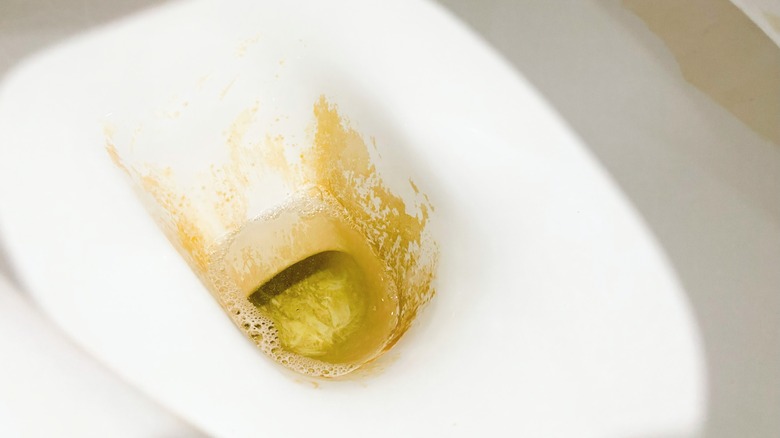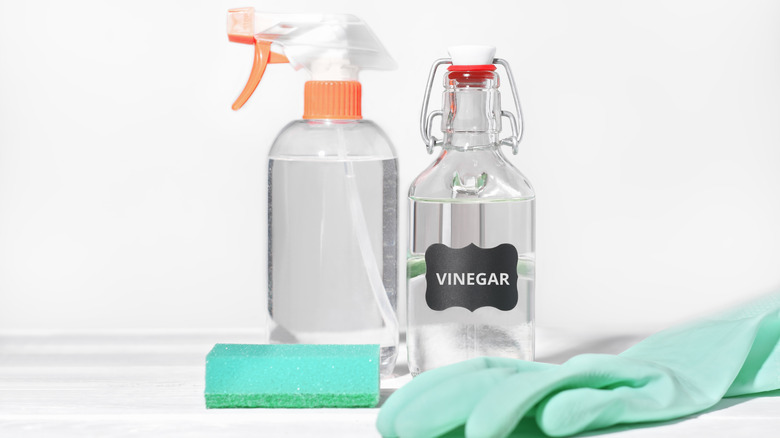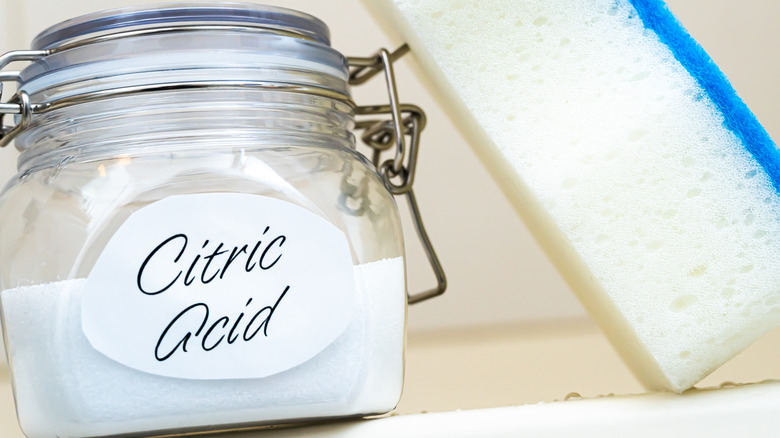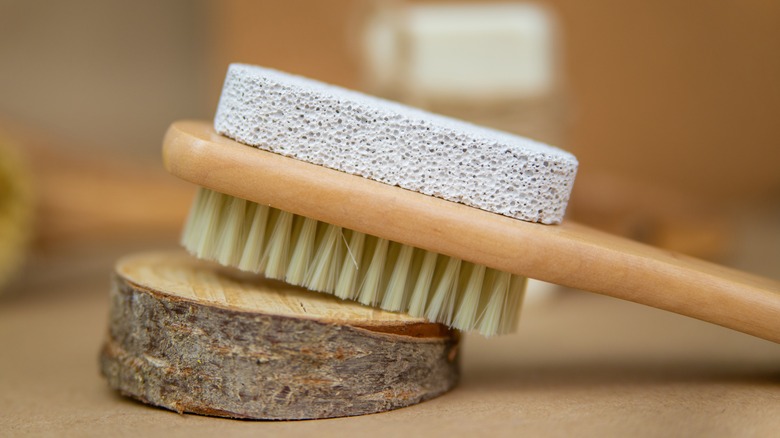8 Foolproof Ways To Remove The Toughest Limescale Stains From The Toilet
You may have heard that you can easily remove stubborn limescale from faucets with game-changing ingredients, some of which you may already have stocked in your cupboards, like vinegar or baking soda. But toilet bowls can be a bit more challenging to tackle stains and buildup from standing water. Limescale buildup in toilets can also calcify and develop an off-putting brownish stain. Luckily, you can still use some of these same ingredients (and a few others) to remove tough limescale stains from the toilet. You just might need to adjust the process with a bit more time and elbow grease, but many of these ingredients will do most of the work for you.
Before going out and buying chemicals or expensive limescale removers, it's worth trying a few more affordable items you can find around the house. Limescale can be softened and broken up by mild acids like vinegar or citric acid. Abrasives like baking soda or even scrubbing with a pumice stone can also prove effective. Depending on the severity of the buildup, you may need to leave ingredients in the bowl for several hours or even overnight. You can also combine some of these ingredients, like vinegar and lemon juice or citric acid, for more stubborn jobs. Once the toilet bowl is limescale-free, you can take measures to prevent limescale from building up before it becomes a problem.
A vinegar soak dissolves limescale
Vinegar is one of the best household ingredients to use for cleaning certain substances, especially limescale. The acidity of the vinegar works to dissolve and loosen limescale buildup and remove stains. You may want to think twice about cleaning with a mixture of baking soda and vinegar, because the baking soda neutralizes the acidic power of the vinegar. Instead, mix vinegar with salt to give it some abrasive quality if desired. Let the vinegar soak in your toilet for 3 to 4 hours or overnight before scrubbing off the calcified limescale.
Baking soda lifts tough stains
While it may not work so well when combined with vinegar, baking soda on its own can be effective at removing limescale stains from porcelain. Baking soda is an abrasive, alkaline product that is well-known for removing stains from various surfaces, including porcelain. Baking soda is best for removing the stain left behind from limescale, rather than the buildup itself. If other methods leave discoloration behind, follow up by soaking the stains with a baking soda solution, leaving the baking soda to work its magic for up to 30 minutes before scrubbing.
Denture cleaner leaves the bowl sparkling
Denture cleaner can do so much more than simply clean dentures. When you consider that many dentures are made with porcelain teeth, it makes sense that denture cleaner could be used to remove stains and odors from your toilet too, leaving it sparkling and limescale-free. Add one or two tablets to the toilet bowl and allow them to dissolve fully. Then, wait about 30 minutes before flushing. You may still need to scrub a bit if there is a lot of buildup or deep staining.
Citric acid breaks down limescale
If you are looking for a way to get rid of stubborn limescale without using vinegar, citric acid may be the next best thing. Citric acid powder works in the same way that vinegar does to break up the chalky limescale with acid. For minor issues, you can just add some citric acid powder to the toilet water and let it sit for a few hours or overnight. For tougher jobs, you may want to drain the toilet bowl and create a paste with the powder, then scrub lightly to coat the toilet bowl before letting it sit.
Lemon juice lifts the buildup
If you don't have any citric acid powder, you can use lemon juice as a natural source of citric acid that also smells fresh. Citric acid powder is a condensed form of the same citric acid found in lemon juice, so lemon juice will clean limescale in much the same way. You can also mix lemon juice with vinegar to combine the cleaning power of both ingredients while disguising some of the strong vinegar scent. It is recommended to leave lemon juice in the toilet for at least an hour before you try to scrub the limescale away.
A pumice stone delivers a strong scrub
One of the quickest solutions for removing limescale from the toilet is using a pumice stone to scrub it away. Online cleaning forums, social media pages, and blogs are filled with DIYers who swear by the pumice stone method. Not to mention, you can pair the physical scrub with any of these other chemical methods to remove the most stubborn residue effortlessly after soaking. However, it is important to consider that the rough stone could scratch your porcelain, so be mindful of using gentle pressure.
Soda can corrode the tough limescale
Have you ever heard about using Coca-Cola or similar sodas to clean? Turns out, it's not just a myth; it actually works! A research study on soda acidity published in the Journal of the American Dental Association, found that some types of soda that use phosphoric acid, including Coke, are erosive, with a similar acidity to lemon juice. While that might be bad news for your teeth, you can leave soda with phosphoric acid in your toilet overnight to break up stubborn limescale buildup.
Buttermilk is a surprising solution
You may be surprised to learn that you can eliminate limescale stains for good with this unexpected kitchen ingredient. Buttermilk is naturally acidic enough to not only remove limescale buildup, but also clean the stains left behind. You can use it just like vinegar or citric acid by pouring it into the toilet bowl and letting it sit. Wait for at least an hour or overnight before attempting to scrub the toilet so the buttermilk has time to break down the deposits.








